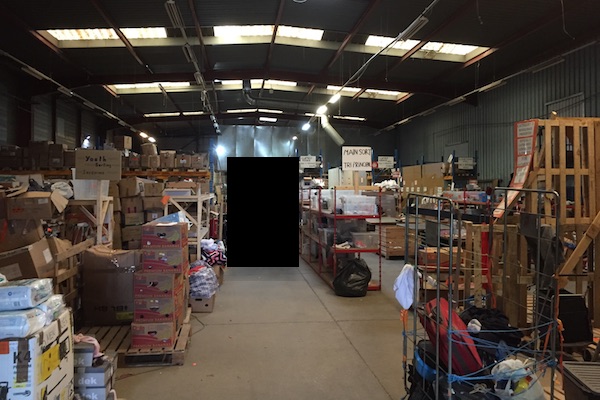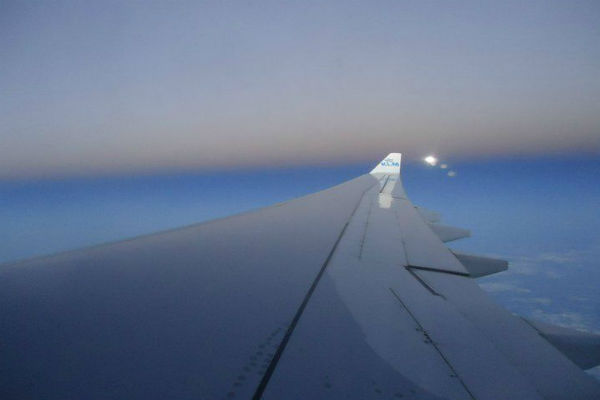Calais is a small town in Northern France that lies along the English Channel, an hour from London via Eurostar. The town houses the Calais Jungle refugee camp, home to over 9,000 refugees mostly from Afghanistan, Sudan, Syria, and Eritrea. Only a handful of organizations have been at the forefront of providing housing and aid to over 9,000 refugees. They do everything from providing essentials to educational programs and legal help for the refugees.
- My Observations of the Calais Jungle
- Calais Diaries: Day 1 at the Help Refugees Warehouse
- Lost in the Calais Jungle
- Saucepans, Jungle Books and a Conversation with a Weirdo
- Calais Diaries: That Time I Got Yelled at By One of the Refugees
- Banksy’s Mural and the American Living in the Calais Jungle
- Calais Diaries: New Kabul Restaurant, The Kid, The Welcome Wagon, and A Momento
Volunteering in Calais
I volunteered with Help Refugees, a UK-based organization operating out of the L’Auberge des Migrants warehouse in Calais. At the warehouse, volunteers from around the world sort and prepare food, clothing, and shelter for distribution to the Calais Jungle refugee camp.
Due to threats against volunteers by fascist groups, Help Refugees was tight-lipped about the location of the warehouse. They did not provide an address until my volunteer application was approved.

First Day
On July 10, I arrived at the warehouse at 8:45 AM for my first day of duty. I walked up to two middle-aged women sitting on a trolley and asked them where to check in. They pointed out the volunteer coordinator, Hettie. I looked around before spotting a brunette wearing skinny jeans, several layers of tank tops, and an earful of piercings.
She waved me over while dashing gracefully towards a makeshift booth. She gave me a packet to read, pointing to the most important parts: liability, social media policy, code of conduct. Then she instructed me to fill out a brief form detailing my contact information.
Another volunteer turned up and introduced himself to Hettie in an American accent. He had arrived with a couple of friends and a car full of donations. I would later meet Brad and his friends Mark and Valentine, two travel hackers from the Netherlands who ran a startup called Wanderbrief. But at the moment, I was reading the social media policy. It instructed us not to post photos of the warehouse exterior or the refugees – especially children.
After I submitted my form, Hettie instructed the group of 50 or so volunteers to form a circle. She led us with some light warm-up exercises: Running in place, stretches, etc. When the warm-up ended, she had us turn to the person on our left and give them a big hug. To my left was a red-headed Spanish girl named Clara, who embraced me like a long-lost friend. That pretty much summed up the sense of camaraderie among the volunteers.
The Mission
Next, Hettie gave an impassioned speech, affirming the importance of what we were doing. She also impressed upon us that the number one priority was the refugees. Our hard work determined how much better off they would be. We were there to serve them, first and foremost. That meant refraining from making rude comments about the condition of the camp or acting like tourists when entering the camp. More important was that we respect the refugees and preserve their sense of dignity.
“This is not an integration project, this is a survival project,” Hettie was fond of saying in reference to the Calais Jungle dress code. It dictated modest clothing and, furthermore, for the women to pull their hair into a bun. She ended her spiel with, “There is no limit to the good you can do when someone else is getting the credit,” emphasizing the importance of our collective effort over our individual egos. We donned our hi-visibility vests and got to work.
Volunteer Warehouse Assignments
When assigning volunteers, Hettie didn’t ask anyone’s preference. Instead, she’d give a vague description of the type of skills she was looking for and then assign people accordingly. She asked for people who were “good at doing what needs to be done. Go-getters without ego issues.” That’s how I got assigned to the clothes sorting team. It ended up being fun and we got to socialize easily while working together.
On the sorting team, I met an 18-year-old German kid named Max, who drove to Calais and committed a month of his time before starting university in the fall. Max was a nice kid and when he told me his age, it hit me that when I left Germany in 1997 at the age of 9, he may not even have been born! Max helped me brush up on my rusty German while I, in turn, corrected his fairly excellent English on occasion.
I also met Aurelie (Lilly), a Taylor-swift look-alike from Bordeaux, who drove to Calais with her mom. They were very active in helping Syrian refugees in their community. They decided to spend a weekend volunteering in the Calais and Dunkirk refugee camps to further their reach.
I later met Lilly’s mom, Sophie, while putting together hygiene kits. We had a hard time communicating with her limited English and my non-existent French, so she asked if I spoke another language. I told her I was fluent in German and she proclaimed that she was too! Her father was German, so she grew up bi-lingual. Even though the three of us only spent a few hours together, we bonded and have stayed in touch since.
Sorting Donations in the Help Refugees Warehouse
The team coordinator instructed us to toss anything white, XL, women’s shirts that weren’t “jumpers” and things like Santa lingerie. Yes, someone donated Santa negligee, which was prominently displayed as an example of what goes in the “no” pile.
They told us to pay attention to quality and to put ourselves in the refugees’ shoes, literally and figuratively. These people have pride, as we do. It’s tough enough to stand in line for donated clothes, but imagine how it feels when those clothes are torn, missing buttons and zippers, or smell terrible.
We tossed anything that wasn’t in good condition or that we wouldn’t want to wear ourselves. Rejected items got turned into insulation, so it wasn’t a complete waste. I later came across this mountain of discarded clothing, which was eventually hauled off for insulation.

There was also a separate pile where we tossed things like name brand clothing and evening wear. These items were then sold at the “warehouse boutique” to fund operations. Volunteers could buy or borrow clothes there to ensure they were properly dressed when going into the refugee camp.
I learned a whole new vocabulary working alongside the mostly British volunteers. Suddenly I found myself saying things like “jumper”, “trousers,” and debating the difference between saucepans, frying pans, and pots. It seems obvious, but some of the donations left us scratching our heads as to which category they fit into.
After sorting clothes for a couple of hours, Hettie came around asking for two people who wanted a change of pace, giving yet another vague skills description. Ready for a change, I volunteered.
The Art of Rolling Toilet Paper
Nothing is more therapeutic and humbling than rolling toilet paper for 6,000+ people who depend on you to provide them enough to last a week. When Hettie assigned me to Hygiene, I found my place in the warehouse. I pitched in wherever they needed me, but when I wanted a moment of peace, I went back to hygiene and packet toiletry kits.
When it came to rolling toilet paper, I experimented with a few different techniques. I finally found one that was the most efficient. It involved attaching a pen to the inside of the roll and then rolling clockwise.
People in this hobby can be spoiled brats and so much gets said about first class amenity kits. Nothing makes you shut up about amenity kits like seeing one of these, which were distributed weekly to the refugees:

Sophie and I, along with an 18-year-old bartender apprentice from the UK, put 122 hygiene kits together on the first day. They contained the following items:
- Soap
- Flannel hand towels (little rectangles cut from large towels)
- Razor
- Toothbrush
- Tissues
- Deodorant
It felt really good to do some manual labor after so many years of lazing in front of a computer. I walked 4 – 7 miles every day and lost 6 pounds by the end of the trip. Being active and working towards a positive goal also helped with the depression I’ve struggled with over the years.
While working in the warehouse was a fun experience, the best part was going into the camp and interacting with the refugees. My next post will cover my very first visit to the Calais Jungle.


Enjoyed the read Ariana. Makes me want to volunteer.
Feroz
I’m glad!
I really enjoy reading your posts about your time volunteering at Calais. Thanks for sharing.
Good to hear!
I’ve been looking forward to hearing about your experience. You are not disappointing!
Aww, thanks Karyn!
i feel like volunteering after reading your post. i love your blog.
Thank you Stacey! If you’re going to Europe, I highly recommend it. I don’t know how it is in Calais anymore, with the camp closure, but there is a great need throughout Turkey and Greece for volunteers. I even met a group of Americans who came from Belgium, where they had volunteered with an organization helping newly arrived refugees. There are lots of opportunities to pitch in all over Europe.
Calais ‘Jungle’: Thousands of migrants leave as France begins clearing camp
http://www.cnn.com/2016/10/24/europe/france-calais-jungle-demolition/
It’s all really unfortunate. My heart breaks for everyone.